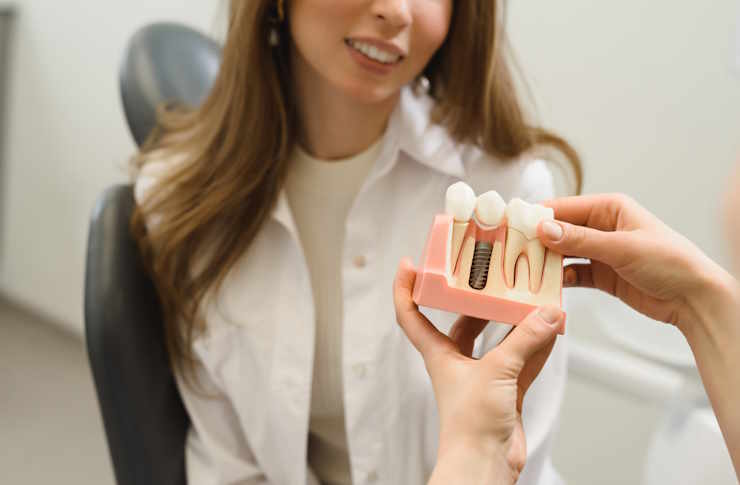Screwless Dental Implants: A Modern Approach to Oral Rehabilitation
Dental rehabilitation technology continues to evolve, and screwless dental implants are among the most advanced innovations in modern dentistry. These implants provide a less invasive alternative compared to traditional screw-based designs, offering patients improved comfort, aesthetics, and long-term stability. This detailed guide explores how screwless implants are transforming dental rehabilitation procedures.

What Are Screwless Dental Implants?
Screwless dental implants, also known as friction-fit or press-fit implants, represent a significant advancement in dental implant technology. Unlike traditional implants that rely on screws to secure the prosthetic tooth to the implant post, screwless implants use a unique locking mechanism. This system allows the crown to be securely attached to the implant without the need for screws, creating a more seamless and potentially more comfortable restoration.
How Do Screwless Implants Work?
The functionality of screwless implants is based on a precise engineering concept. The implant post, which is surgically placed in the jawbone, features a specially designed internal connection. This connection allows the abutment – the component that supports the prosthetic tooth – to be securely locked into place using friction or a press-fit technique. The crown is then attached to the abutment, resulting in a stable and natural-looking tooth replacement.
The absence of screws eliminates potential weak points in the implant structure and reduces the risk of micro-gaps where bacteria could accumulate. This design also facilitates easier maintenance and, if necessary, replacement of the prosthetic crown without disturbing the underlying implant.
Benefits of Screwless Dental Implants
Screwless dental implants offer several advantages over their traditional counterparts:
-
Improved Aesthetics: The absence of visible screw access holes on the crown surface results in a more natural appearance.
-
Enhanced Stability: The friction-fit mechanism provides excellent stability, reducing the risk of prosthetic loosening over time.
-
Simplified Maintenance: Dental professionals can more easily access and maintain screwless implants without the need to remove screws.
-
Reduced Risk of Complications: The elimination of screws minimizes the potential for screw loosening or fracture, common issues with traditional implants.
-
Improved Oral Hygiene: The seamless design leaves fewer spaces for bacteria to accumulate, potentially leading to better long-term oral health.
Durability of Screwless Dental Implants
The durability of screwless dental implants is a key consideration for patients and dental professionals alike. While long-term studies are still ongoing, initial research and clinical experience suggest that screwless implants offer comparable, if not superior, longevity to traditional screw-retained implants. The absence of screws eliminates one potential point of failure, and the precise fit of the components contributes to the overall stability of the restoration.
Factors affecting the durability of screwless implants include the quality of the implant material, the skill of the implanting dentist, and the patient’s oral hygiene habits. With proper care and regular dental check-ups, screwless implants have the potential to last for many years, possibly even a lifetime.
Cost and Available Options for Screwless Implants
The cost of screwless dental implants can vary significantly depending on several factors, including the dentist’s expertise, the location of the dental practice, and the specific implant system used. Generally, screwless implants may be slightly more expensive than traditional screw-retained implants due to the advanced technology and materials involved.
Here’s a comparison of screwless implant options available in Australia:
| Implant System | Provider | Cost Estimation (AUD) |
|---|---|---|
| Nobel Active | Nobel Biocare | $3,000 - $5,000 per implant |
| Straumann BLX | Straumann | $3,500 - $5,500 per implant |
| Neoss ProActive | Neoss | $2,800 - $4,800 per implant |
| T3 Implant | Biomet 3i | $3,200 - $5,200 per implant |
Prices, rates, or cost estimates mentioned in this article are based on the latest available information but may change over time. Independent research is advised before making financial decisions.
It’s important to note that these costs typically cover the implant itself and may not include additional procedures such as bone grafting, sinus lifts, or the final prosthetic tooth. Patients should consult with their dentist for a comprehensive treatment plan and cost estimate.
Many dental practices offer payment plans or financing options to help make screwless implants more accessible. Additionally, some private health insurance plans may provide partial coverage for dental implant procedures, though coverage varies widely between providers and policies.
In conclusion, screwless dental implants represent a significant advancement in oral rehabilitation technology. They offer improved aesthetics, enhanced stability, and simplified maintenance compared to traditional screw-retained implants. While they may come at a higher initial cost, the potential benefits in terms of comfort, durability, and long-term oral health make them an attractive option for many patients seeking tooth replacement solutions. As with any dental procedure, it’s crucial to consult with a qualified implant dentist to determine if screwless implants are the right choice for your individual needs and circumstances.
This article is for informational purposes only and should not be considered medical advice. Please consult a qualified healthcare professional for personalized guidance and treatment.




